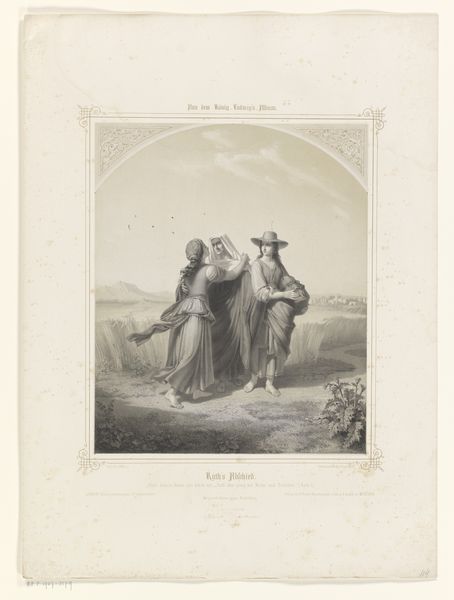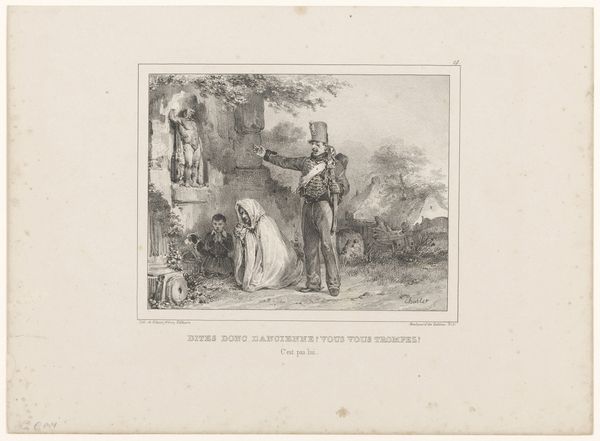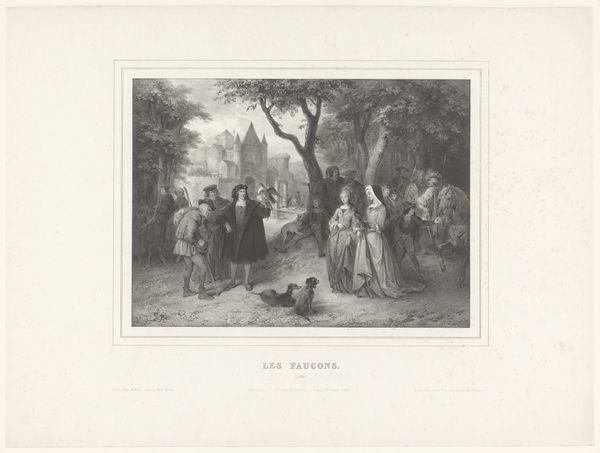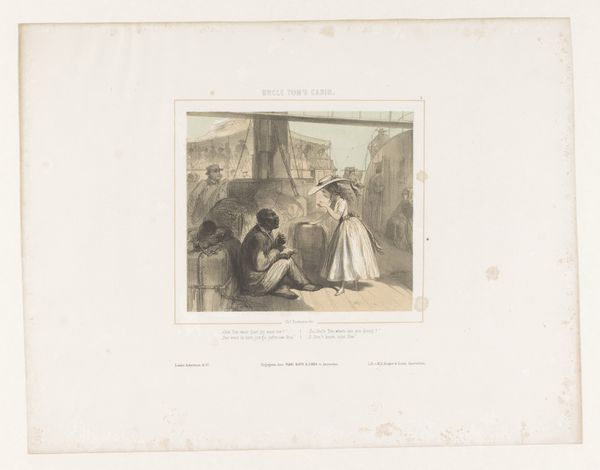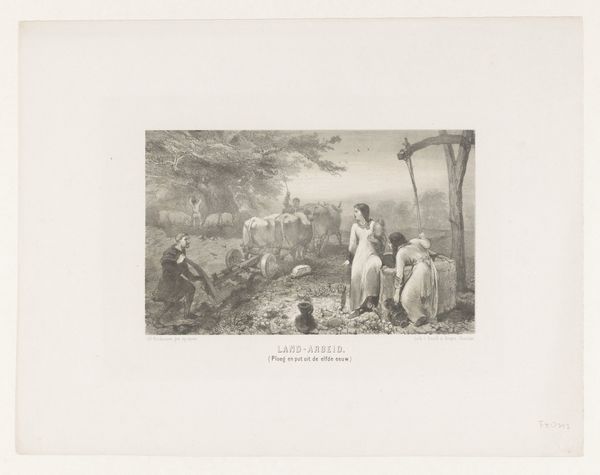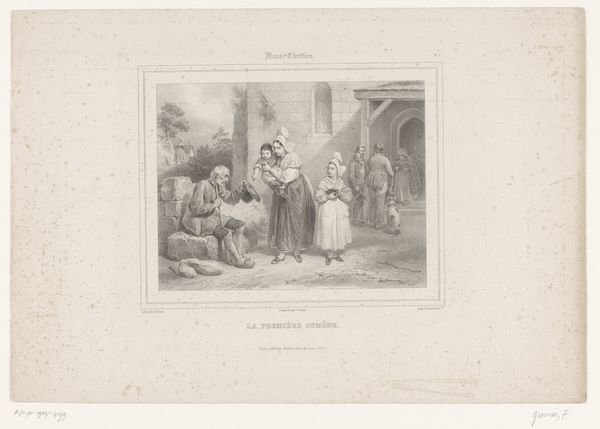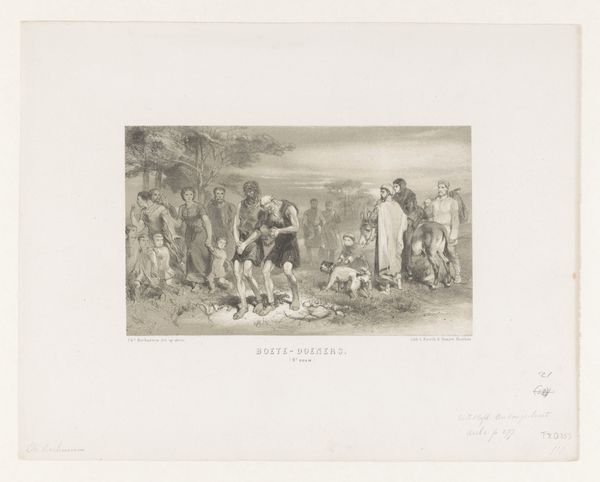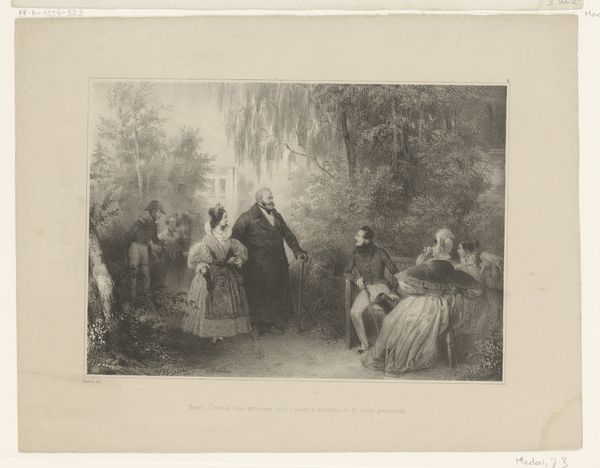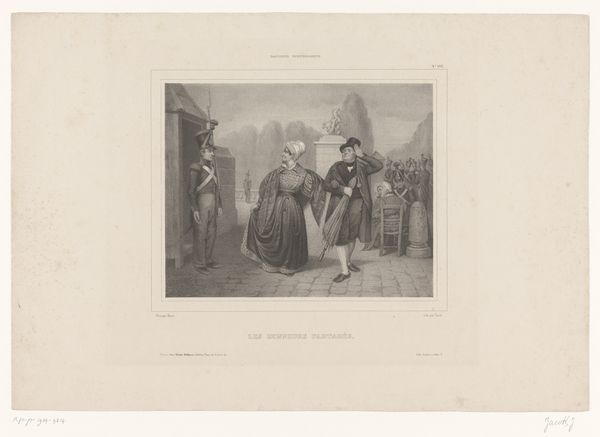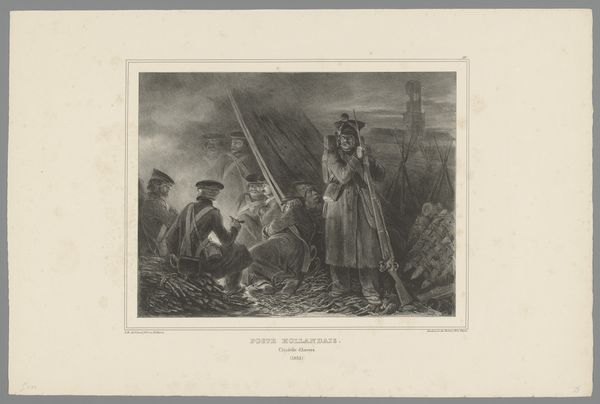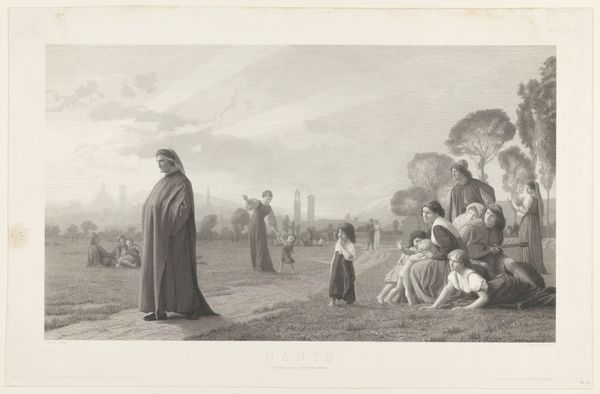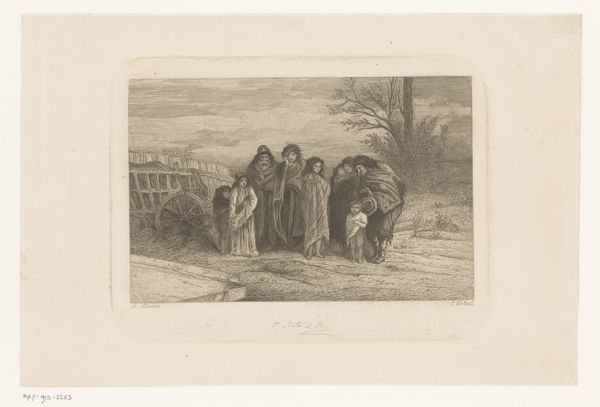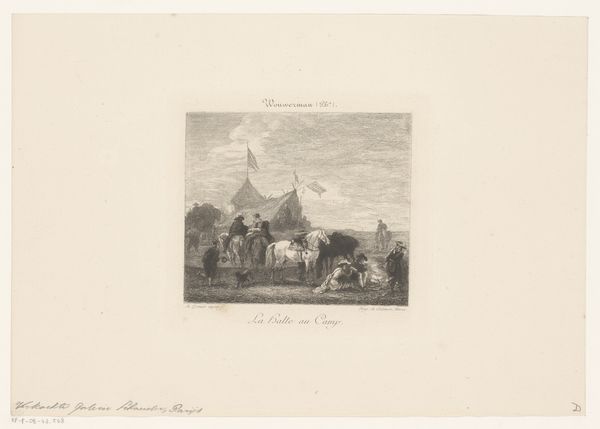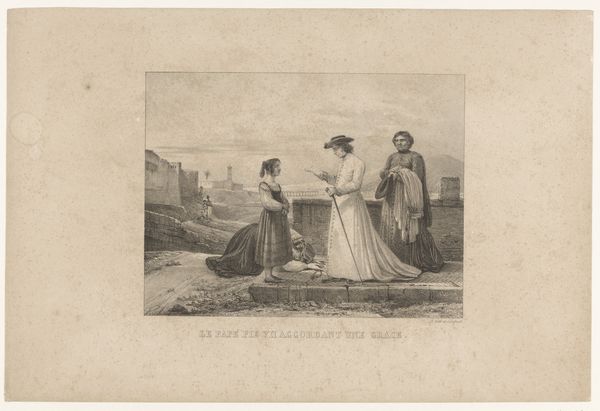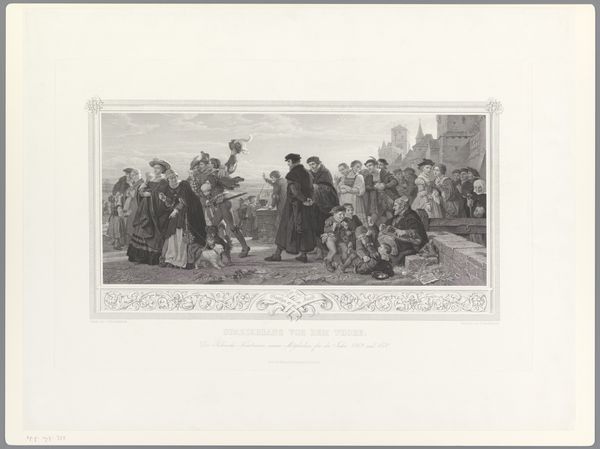
Dimensions: height 275 mm, width 415 mm
Copyright: Rijks Museum: Open Domain
Curator: Looking at this, I'm immediately struck by its somber mood; there's a deep sense of resignation hanging in the air. The grayness, the figures huddled together – it all points to despair. Editor: This is "Leonoor in Wanhoop," or "Leonoor in Despair," a pencil, etching, and lithograph print by Charles Rochussen, made sometime before 1870. It's currently part of the Rijksmuseum collection. The title alone tells us so much! Curator: It does. And contextually, how does Rochussen’s work speak to broader themes circulating within the art world, and Dutch society in general at that time? Is this commentary on societal expectations, on women’s roles, or something else entirely? Editor: Rochussen came from a family deeply involved in the arts and sciences, and he often used his art for social commentary. Consider how popular narrative art became. Artists used stories, real or imagined, to address moral and societal concerns. The print, meant for "Album van den Nederlandschen Spectator" implies an element of social critique meant for public discourse. Curator: I wonder what story is being shown? The background features some figures in nice clothing, a hill, and maybe some type of church? But there are also those darker figures on the side, seemingly weeping and embracing each other. Editor: "Leonoor in Despair" likely draws upon popular melodramatic themes of the era. Given its romanticist leaning, the composition directs viewers to contemplate social issues such as inequality. This might explore the social exclusion experienced by people such as women that society ostracized. The sharp contrast and light play create tension, with a poignant touch of human drama and despair. Curator: Right, there is an undeniable intensity, but is it romanticized for artistic impact? Rochussen seems intent on triggering something specific, not simply reflecting despair, but also potentially pushing back against its root causes. The fact that is made using different printing methods to me suggests that his art might have been intentionally seeking widespread viewing? Editor: I see what you mean about challenging underlying systems. He’s inviting his audience to reflect, perhaps even subtly questioning the structures that lead to this despair in the first place. Thinking about public reception allows me to reflect how imagery of despair such as this, can serve as catalysts for broader social dialogues. Curator: Absolutely. This has definitely altered how I view it. Understanding that social function of 19th century imagery invites such fruitful discussion about the relationship between the arts and public perception.
Comments
No comments
Be the first to comment and join the conversation on the ultimate creative platform.
